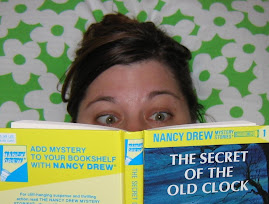Bibliographic Data
Cushman, Karen. 1994. Catherine, Called Birdy. New York: HarperCollins. ISBN 0-06-440584-2
Summary
Catherine, a fourteen year old in the late 13th century, keeps a journal that details her day-to-day life, including her dreams and fears. Her main concerns are how to avoid her father, her needlework, and most of all, marriage.
Critical Analysis
Cushman’s novel offers readers a glimpse into what a fourteen year old in the middle ages might feel, say and do on a daily basis. This particular girl is quite modern in her thinking, because she is not interested in marriage, needlework, or most of the other things she is supposed to do. Catherine does love to play and explore, spend time with friends,
A recurring theme in this novel is that of freedom, or more specifically, the lack of freedom. Though Catherine has an enviable position as the daughter of a knight, they are not so wealthy that she can escape housework, or sharing her bedroom with a servant and houseguests. The most difficult freedom to give up, however, is choosing a mate. Her greedy father has decided that she must marry soon, and he begins to invite suitors to their house, not for her approval, but for theirs. This theme is echoed in Catherine’s nickname, Birdy, as well as the many caged birds she keeps in her bedroom, or the cocks she sets free in the market. Catherine chafes against the rules she must live by, and everyone can see it. Her mother asks her, “Why not cease your fearful pounding against the bars of your cage and be content?”(p. 53)
Catherine also contemplates the world around her, and her place within it. She thinks about what she will do to earn a living and dreams of traveling to exotic lands. She frequently questions the teachings of her church, especially when she meets a group of Jewish people. She is looking forward to seeing the wicked people with horns and tails, and is surprised to find they are like anyone else. Catherine’s close friendship with Perkin, the goat herder, is also noteworthy. Though she is high above Perkin on the social scale, she feels only great admiration for him. People she is supposed to respect, on the other hand, often turn out to be unworthy. Her father abuses Catherine physically and emotionally, and his greed drives him to offer her in an early marriage to whoever will offer the highest payment, no matter what her feelings on the subject or the groom.
Catherine’s struggle for freedom and finding her fate lead her to the conclusion, where she has an epiphany. She finally understands the words of the wise old Jewish woman who had told her that in the hereafter, God would not question why she did not do the things that others had done, but why she had not lived her own life. She chooses to accept her fate of an arranged marriage, but vows, “I cannot escape my life, but can only use my determination and courage to make it the best I can.” (p. 203) This revelation is followed by an ending that is a bit too neat given the events of the previous year, but forgivable.
Reviews
From School Library Journal:
“The 14-year-old daughter of a rustic knight records the events of her days in the year 1290, writing perceptive, scathing, and often raucously funny observations about her family, friends, and would-be suitors. A delightful, rebellious heroine, determined not to marry the man of her father's choice.” - Copyright 1997, Cahners Business Information, Inc.
From BookList:
“The diary format helps portray the tedium of life in the Middle Ages, the never-ending sewing, cooking, and other chores; the dirt and the illness; and, worse, the lowly role of women in medieval life. But this diary style also inhibits the ability of the characters to come alive. Birdy's is the only real voice. Fortunately, it's a sprightly voice, complete with its own brand of cursing ("God's thumbs!"), that moves the action. Kids can read this on their own or as a supplement to studies of the Middle Ages.” – Ilene Cooper, April 15, 1994, Copyright American Library Association.
Connections
Students can use Cushman’s novel to study the elements of characterization and setting. The following questions can be used in class discussions or for writing prompts.
· Which characters are well-developed, and which are not? Why do you think this is? Do any of the characters change?
· Setting is important to this novel. How is your life like Catherine’s? How is it different?
Though this book would probably appeal mostly to “tween” girls, the main character is independent, curious, and mischievous, which transcends gender.
The author adds a brief section at the end of the book that includes information about the period in which the book was set, as well recommendations for several books about or set in the middle ages.
*****
Reviews found at the Carrollton Public Library website, http://cityofcarrollton.com/library/
Subscribe to:
Post Comments (Atom)


1 comment:
hi we have to read this book for english and it is so funny I think it is cool how catherine starts off as a brat but then changes
Post a Comment